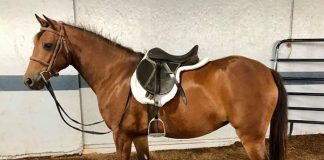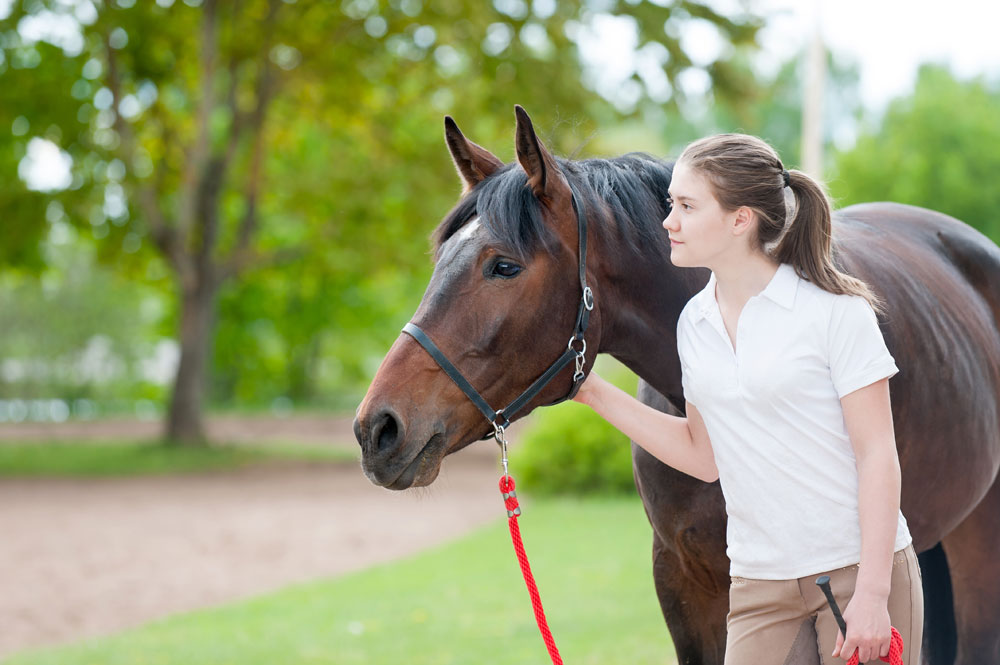
Read to learn about equine adoption dos and don’ts
“She said, ‘You have to look at this horse,’” recalls Neely Rae’s grandmother, Laurie Oehlerking. “‘I fell in love with her and she loves me!’”
Ultimately, Neely Rae’s family adopted the 16-year-old mare named Rosie. Now five years later, the pair are winning ribbons at trail obstacle competitions in their home state of Texas.
“She was just what Neely Rae needed,” Oehlerking says. “It was as if it was meant to be.”
Smart Adoption
In most cases, however, the journey from finding a horse to adopting one involves more than love at first sight.
According to statistics compiled by the Right Horse Initiative, in an effort to boost successful equine adoptions and promote equine welfare, between 7,000 and 10,000 horses are adopted annually through an estimated 1,000 equine adoption organizations nationwide. And while matching adoptable horses with suitable prospective owners is key to promoting equine welfare, both agencies and potential owners must educate themselves about one another before any horse moves on to a new home.
“You have to be smart and do your homework,” says Jennifer Williams, Ph.D., president and founder of the Bluebonnet Equine Humane Society and the author of How to Start and Run a Rescue. “That means as soon as you make the commitment to adopt, you must make sure that the organization you plan to adopt from is reputable and legitimate.”
Schedule a Visit
The most obvious way to get to know an adoption organization and how it works is to walk the premises and chat with volunteers and staffers, including the maintenance crews and horse handlers.
Next, walk through the barn. Notice if common areas are tidy and if stalls appear to be cleaned at least daily. Check to see if the barn is generally in good repair. Whenever possible, take a peek at feed and hay rooms to be sure they are organized well-stocked.
“You should see horses in a variety of conditions: some that have just come in that need special care, those who are transitioning, and those that are ready for adoption,” says Williams.
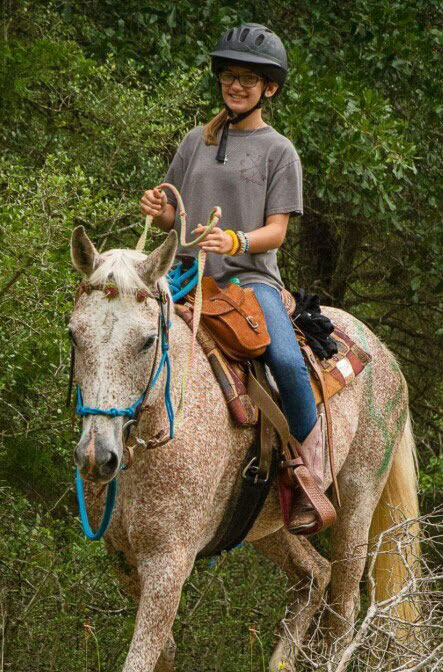
After that, visit with people in the community to find out what they think about the organization as a neighbor.
“Some organizations have been around a long time and some are not as well-known, but they all have had some contact with the community,” says Williams. “Talk to the people at the feed store and to local veterinarians to see what they know and how they feel about the organization.”
Finally, ask the agency for references. Ask to talk with other adopters and ask to see their financials,” Williams recommends.
Follow the Money
An agency’s financial statement provides a snapshot of the organization—how it does what it does and how it uses its money. The majority of legitimate horse adoption organizations list links to financial statements on their websites. Those links should include profit and loss statements, as well as whether the organization has earned 501(c)3 status under Internal Revenue (IRS) regulations.
Under the designation, the IRS recognizes the organization as nonprofit and allows financial contributors to deduct donations to the rescue from their personal income taxes. Nonprofit IRS status can also inspire individual contributor confidence and positions rescues to compete equally for support grants.
Also, the agency’s administrators should produce the most recent financial statements at a prospective adopter’s request.
Review the Board
Just like its financial statements, the agency’s board of directors can reveal much about the organization. Most legitimate adoption organizations list the names and short biographies of those who serve on their boards of directors on their websites. Listings may also include how long directors have served and why they are suitable board members.
Who sits on the board is important because the board votes on which programs are successful, which need funding, and what to do with the money they have, according to Laurie Oehlerking, who has served as the Expo Coordinator for the BlueBonnet Equine Humane Society. “If you see that all the members of the board of directors are from the same family, it could raise a red flag,” she says.
Adoption Policies
Just after Erianne Samples, her husband Sgt. First Class Joshua Samples, and their three children moved to their farm in Tennessee, the family set about finding a horse to adopt.
“We knew nothing about the Horse Plus Humane Society, but a neighbor told us about it,” says Erianne. They decided to go there to look into adopting a horse.
At the top of their list of adoptable equine traits was finding just the right equine companion for their 7-year-old son, Soren.
“Soren was very scared, so I wanted to make sure that we got a horse that was calm and quiet,” Erianne recalls.
With help from the staff and Horse Plus, the Samples family adopted Zeus, a 10-year-old Morgan cross.
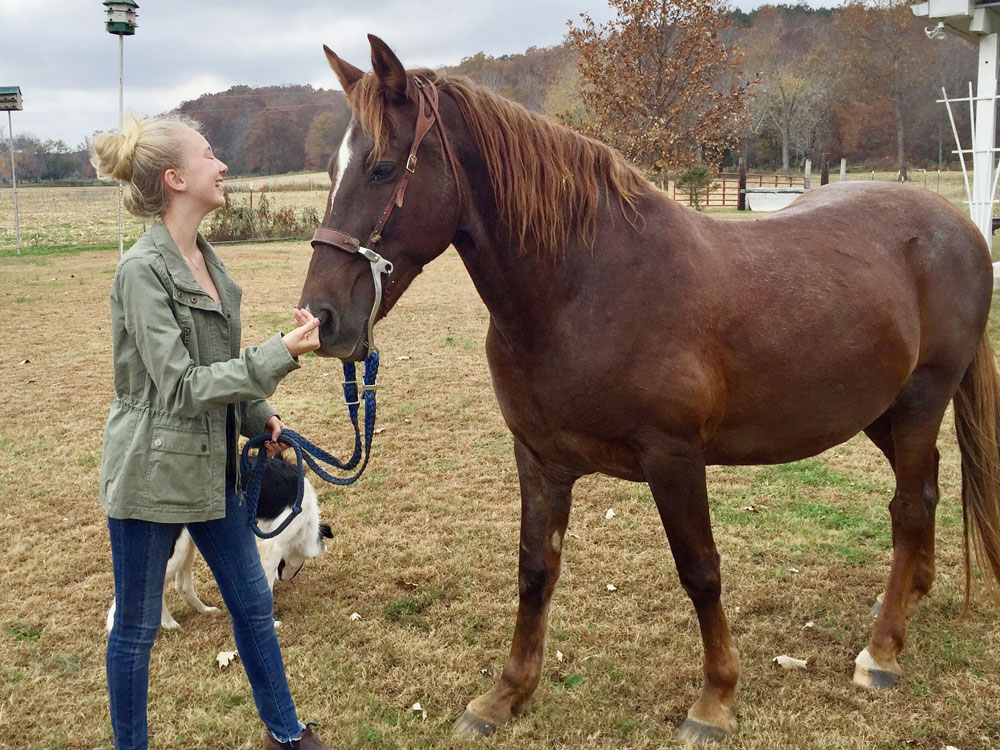
Before they could bring Zeus home, the Samples had to apply to adopt; agree to the agency’s adoption terms; and provide information about their finances, their experience with horses, and whether their farm was suitable for horse keeping.
According to Williams, all legitimate horse adoption agencies have established policies that detail how prospective adopters and their horse housing will be screened and how adoptions will be carried out.
“We also ask how many horses you have,” Williams says. “That’s important because not only does the horse have to be a good match for you, but it has to be a good match for your herd.”
Many reputable organizations also require that potential adopters spend time with the horse before the adoption takes place.
“Every adopter of one of our horses must come and spend time with the animal and the trainer,” says Jerry Finch, president and founder of Habitat for Horses. “Just as the adopters are measuring the qualities of the horse, we are taking a measure of the adopter. If any of our employees find any reason to question the ability of a potential adopter, they can put the adoption process on hold until they are satisfied that the adoption is a good match.”
Making it Legal
Once potential adopters are approved, contracts are necessary in order to make the adoptions final, says attorney and author Milton C. Toby, JD. Viable contracts will establish parameters of the adoption transaction, including the transfer of ownership (“title”) of the horse.
“The contract should be a transfer of ownership from the rescue to the person adopting the horse, [but] for the transfer of title to be valid, the adoption facility must first actually have title to the horse,” says Toby. “If a horse has been donated to the facility, for example, the donation agreement should include a transfer of ownership to the facility. Without such a transfer, the person donating the horse might decide later to reclaim [their] property.”
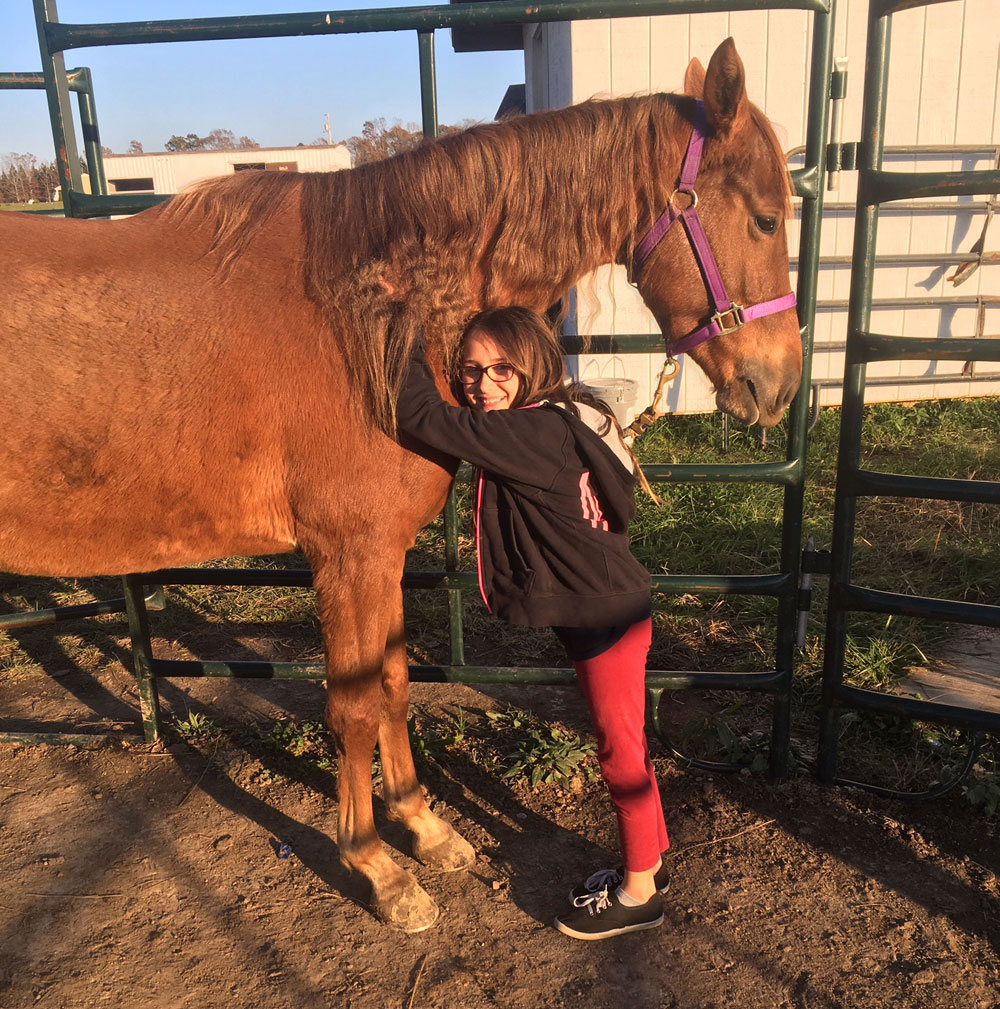
A viable contract should also spell out the obligations and expectations of everyone involved in the transaction. For example, while the agency has the reasonable expectation that the horse will go to a good home, it retains the right to inspect the animal and the premises after the adoption has taken place. This might include on-site inspections or photographic evidence that the horse is well cared for.
In addition, the contract should also grant a right of first refusal to the facility if the new owner decides to sell or otherwise dispose of the horse, or if a situational change such as financial hardship, illness, or death prevents the adopter from providing proper horse care.
“This requires the new owner to notify the facility before selling or giving away the horse, and gives the facility the right to take the horse back,” says Toby.
Meanwhile, the prospective adopter should expect that the adoption organization provide a full disclosure of the horse’s physical and behavioral condition at the time of the adoption, and the adopter should have the opportunity to return the horse if it fails inspection by their veterinarian.
“Finally, the contract should include—and the new owner should insist on—a short trial period to determine if the horse and new owner are a good match before the adoption is finalized,” Toby advises.
For the Samples family, the match was so perfect that they returned to Horse Plus to adopt another horse, Daisy, for their daughter Rose.
“The people were supportive and professional, so the adoptions—the screenings and the contracts—were the right thing for us,” says Erianne. “We’re pretty excited.”
This article originally about equine adoption dos and don’ts appeared in the March 2018 issue of Horse Illustrated magazine. Click here to subscribe!
Further reading:
Transitioning the Retired Racehorse





